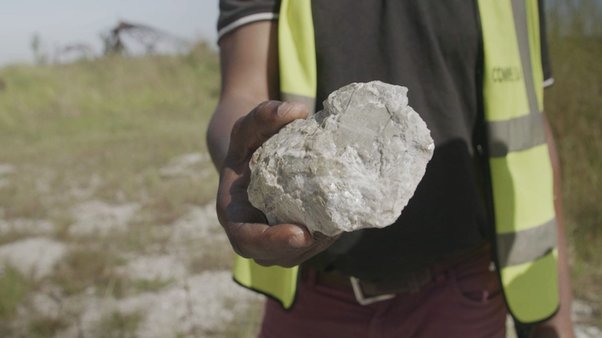Trump’s obsession with rare earth minerals makes sense when you understand their role in modern military technology
Critical minerals have in recent years been central to global visions of a greener future. Finding enough lithium for batteries in electric vehicles, or rare earths for wind turbines, was seen as essential in efforts to finally transition away from our reliance on oil and gas.
Major bodies supported this push. The UN, the International Energy Agency and the EU all recognised the importance of these minerals for green technologies, and even Biden’s Inflation Reduction Act aimed to increase the domestic supply.
Meanwhile, environmentalists campaigned to ensure the mining of these “transition minerals” was equitable and just.
The narrative has always had an element of greenwashing. But now, things are changing. Trump is saying the quiet part out loud.
Trump’s invocation of the Defence Production Act to boost US mineral production underscores a broader reality – the critical minerals rush has sold out climate solutions for security.
Despite being so unconcerned with climate change that his administration has purged mention of it from government websites, Trump frontlined critical minerals in the "National Energy Emergency" he declared the same day he took office.
This Executive Order announced urgent measures to secure US access to critical minerals and energy resources, “to sustain the basics of modern life and military preparedness.”
Since then, Trump’s critical minerals rhetoric has centred on rare earths – 17 elements for which the US is highly dependent on Chinese imports. He has attempted to extort them from besieged Ukraine, flirted with buying them from Russia, and even threatened to annex them in Greenland.
This obsession makes little sense if you consider the uses of rare earths in wind turbines and electric vehicles. It makes much more sense if you consider their applications in missiles, oil refining, and dual-use industries such as aerospace and advanced electronics.
The defence industry is not the main source of US demand for rare earths but it is key in arguments about their criticality. Many of the 17 elements play indispensable roles in radar, targeting and missile propulsion systems.
The military implications of Trump’s rare earth fixation are greater given that he doesn’t seem to actually mean rare earths.
Analysts have noted that Ukraine’s rare earth deposits may not be economically viable. But the country has existing mines for minerals such as gallium, crucial for microchips used in military technologies, and titanium, the metal of choice for fighter jets.
While Trump claims to champion "peace through strength," the uncertainty provoked by his overturning of global alliances is ushering in a new era of militarisation. Bereft of US security guarantees, Europe scrambles to arm itself against Russian aggression, stripping money from foreign aid, green initiatives and welfare programs.
While the US defence industry was shaken by the prospect of government cuts, it perhaps needn’t have been. Trump has now proposed a record-breaking trillion-dollar defence budget, and an ongoing Pentagon spending review seems to focus on reducing bureaucracy while – crucially – protecting weapons programs.
Globally, aerospace and defence stocks are outperforming the S&P 500 by the widest margin since the previous Trump presidency. Longstanding pacts on non-proliferation of nuclear weapons look shaky.
More vulnerable countries are developing new dealmaking strategies, angling to trade their long-term mineral wealth for short-term military relief.
In the wake of the Ukraine minerals deal, the resource-rich Democratic Republic of the Congo (DRC) approached Trump with its own minerals offer, in exchange for US support in defeating the Rwanda-backed M23 rebel group. Reuters recently reported US plans to build metals refining facilities on Pentagon military bases.
This emerging military-minerals complex is the opposite of a climate solution. Rather, it will accelerate our slide towards climate catastrophe.
Militaries are already responsible for an estimated 5.5% of global emissions. As defence spending grows, they will also compete for minerals essential for renewable technologies. The energy transition takes a back seat, as the fossil fuels industry revels in oil-friendly US policy and possibilities for renewed US-Russia cooperation.
Climate change will only exacerbate these dynamics. Already, resource scarcity is increasing economic and social tensions among the world’s most vulnerable populations, exacerbating regional conflicts in countries such as Sudan and Syria.
In the medium term, melting Arctic ice will open new fields of extraction under the permafrost of Greenland, and new arenas of security competition in the thawing Arctic Ocean.
What’s left is neither just, nor transition. Rather, minerals demanded for the military drive conflict that fuels further militarisation.
Meanwhile, the world burns.



